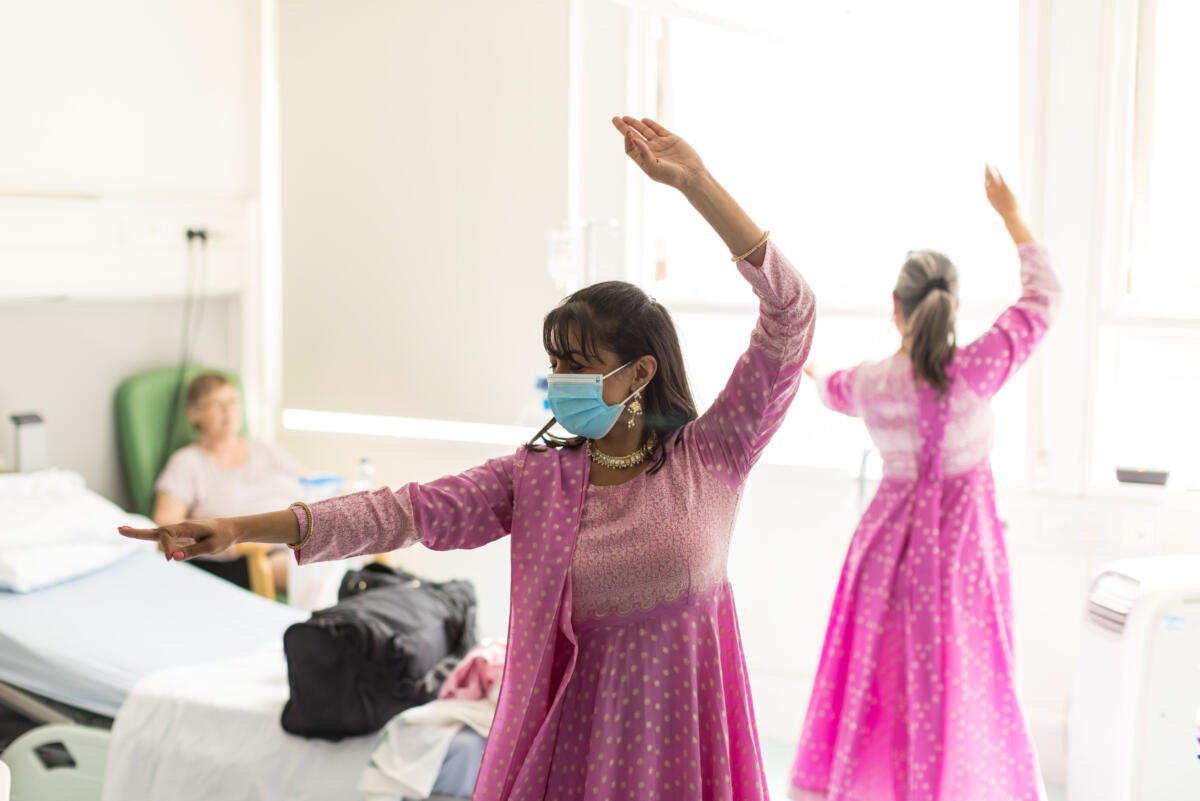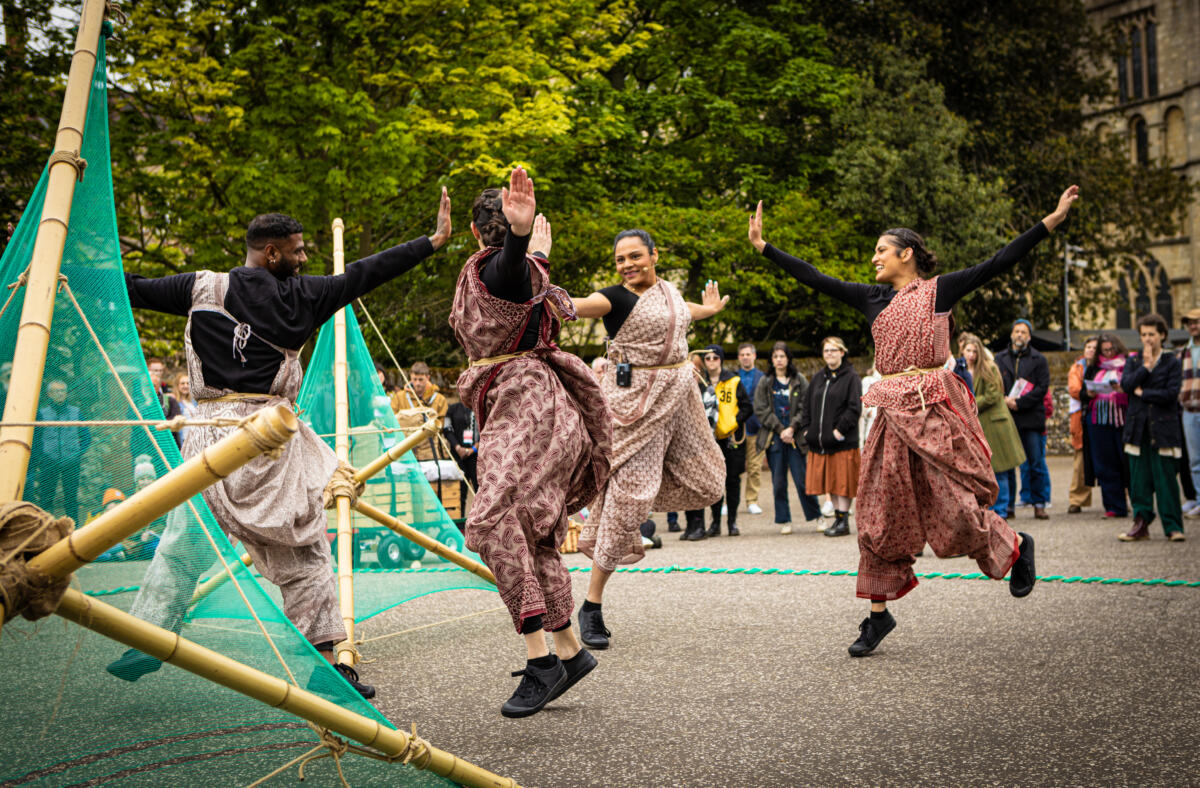Choreography of care: Expanding audiences for dance

A article published in Arts Professional where our Artistic Director, Suba Subramaniam writes about how Akademi is working on taking South Asian dance to audiences beyond the traditional performing spaces.
While South Asian dance company Akademi values traditional performance spaces, it increasingly brings dance into everyday settings, deepening its understanding of what audiences want, says artistic director Subathra Subramaniam.
In the world of performance, the line between audience and performer is usually clearly drawn; a physical and metaphorical divide where one watches and the other is watched.
But for us at Akademi, dedicated to performing the best of South Asian dance to as many people as possible, this distinction is neither fixed nor necessary. Particularly when performing in hospitals, care homes and special needs schools, the question of who is audience and who is performer becomes a space for exploration.
When we bring our dance into such settings, we carry with us not only the visual beauty of the form, but also its deeply embedded capacity to connect people.
A more fluid understanding of audience
Working across a spectrum of venues from hospitals and theatres to festivals and shopping centres, we constantly question and redefine the idea of ‘audience’. In some contexts, the audience is seated and silent, watching a carefully choreographed piece unfold. In others, it is fluid, shifting and dynamically involved.
In our outdoor and community work, the energy is expansive, bold and collective. In work for children, the audience often becomes part of the narrative; their responses shaping the direction and content of the piece. And in hospital and care homes, the dance is an offering, an invitation that adapts to the energy and receptivity of those present.
This fluid understanding of audience requires us, as artists, to listen deeply. It demands humility, adaptability and an expanded definition of what impact or success looks like. It might not be applause that marks a successful performance, but a smile, a gesture returned, or a moment of stillness shared.

Proximity and presence changes everything
Unlike the traditional stage-audience divide in a theatre building, our work unfolds in intimate, often unstructured environments – a bedside, a waiting room, a shared ward.
This proximity to people changes everything. It alters the energy between the dancer and the spectator. There is no fourth wall, so the dancer becomes more than just a performer; but rather a facilitator of a shared experience.
In these settings, we often witness quiet transformations. A patient who hasn’t spoken in days begins to hum along to a familiar tune or start to sway gently, mirroring a dancer’s movements. A child’s eyes light up as they see a story come alive in gestures and movement. The boundary between audience and performer is softened and what emerges is a collective, shared space where everyone is involved, however silently or subtly.
These moments, while small, are profound. They remind us that dance is a relational experience. It thrives in places like corridors and corners, where people most need connection.
South Asian dance as a bridge
South Asian dance is a deeply communal form. Rooted in ritual, celebration and storytelling, it was never meant to be confined to proscenium stages. Its rhythms, gestures and narratives speak to universal human experiences of joy, longing, devotion, playfulness.
When we take this form into healthcare settings, for example, we are not diluting it. We are, rather, bringing it where it can belong. We are reminded that dance is as much about the experience it creates as the shape it takes.
It can be a balm, a memory, a moment of beauty in a clinical space. And when the line blurs between who is dancing and who is watching, the powerful notion that dance is part of all of us can be even more poignant.
The power of mudras
South Asian dance traditions have long celebrated the expressive potential of the body, and particularly of the hands. Mudras, or hand gestures, are a codified system allowing dancers to tell stories, evoke emotions and connect with audiences across language barriers.
Mudras – an element of expressive storytelling inherent in South Asian classical and folk-dance traditions, are powerful tools. They are evocative and poetic, yet accessible and inclusive. They allow us to invite others into the dance, sometimes literally, sometimes emotionally, and transform a passive viewing experience into one of shared presence and mutual engagement.
In hospitals, where patients may be experiencing isolation, discomfort or disorientation, these gestures offer an immediate point of entry. Simply observing a dancer perform mudras can be meditative, calming and inspiring.
But more than that, when participants are invited to mirror or explore these gestures themselves, something shifts. They move from being passive observers to co-creators. Whether seated or standing, mobile or bed-bound, participants are offered a chance to inhabit and embody the dance in their own way.
Redefining participation
This act of joining in, however subtly or simply, allows for intimacy, dignity and agency. It also redefines what participation can look like in a healthcare context. It’s not about performing in a conventional sense, but about being present, responsive and expressive.
As Akademi continues to bring South Asian dance into diverse environments, whether grand stages or quiet hospital rooms, we remain committed to this expansive view.
We all know that everyone, regardless of age, ability, or circumstance, can connect to dance. And in doing so, they become not just audience members, but part of a living, breathing choreography of care, connection and creativity.